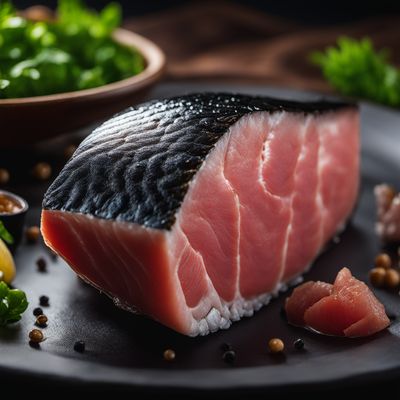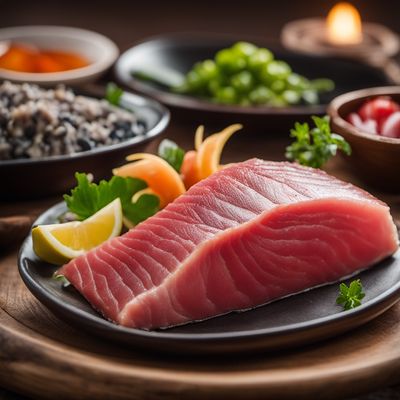
Ingredient
Tuna, skipjack
The Ocean's Bounty
Tuna, skipjack is a firm and flavorful fish that is highly prized in many culinary traditions. It has a meaty texture and a rich, savory taste that pairs well with a wide range of ingredients and cooking methods. Whether grilled, seared, or used in sushi, tuna, skipjack adds a delicious and satisfying element to any dish.
Origins and history
Skipjack tuna is native to the tropical and subtropical waters of the Atlantic, Indian, and Pacific Oceans. It has a long history of being harvested for its meat, which is valued for its taste and texture. Tuna, skipjack is widely consumed in countries like Japan, Spain, and the United States, where it is used in dishes like sushi, sashimi, and canned tuna.
Nutritional information
Tuna, skipjack is a nutrient-dense fish that is a good source of lean protein, omega-3 fatty acids, and various vitamins and minerals. It is low in saturated fat and calories, making it a healthy choice for those looking to incorporate more seafood into their diet.
Allergens
Tuna, skipjack may cause allergic reactions in individuals with fish allergies. It is important to be cautious and consult with a healthcare professional if you have any known allergies or sensitivities.
How to select
When selecting tuna, skipjack, look for fresh fish with clear, bright eyes, shiny skin, and a firm texture. Avoid fish with dull eyes, discolored skin, or a strong fishy odor. If purchasing canned tuna, check for any signs of spoilage or damage to the packaging.
Storage recommendations
To maintain the freshness of tuna, skipjack, store it in the refrigerator at temperatures below 40°F (4°C). If purchasing fresh fish, consume it within 1-2 days. Canned tuna can be stored for a longer period, but it is recommended to check the expiration date and consume it before that.
How to produce
Tuna, skipjack is a wild-caught fish that cannot be easily produced at home. It is best to purchase it from reputable seafood markets or grocery stores that source their fish responsibly and ensure quality and freshness.
Preparation tips
Tuna, skipjack can be prepared in various ways, including grilling, searing, baking, or using it raw in sushi or sashimi. It pairs well with flavors like soy sauce, ginger, garlic, and citrus. It can also be used in salads, sandwiches, or pasta dishes for a protein-packed meal.
Culinary uses
Tuna, skipjack is widely used in Japanese, Mediterranean, and Latin American cuisines. It is commonly found in dishes like sushi, sashimi, ceviche, and tuna salads. It is also a popular choice for canned tuna, which is used in sandwiches, salads, and pasta dishes.
Availability
Tuna, skipjack is commonly available in countries with access to coastal waters, such as Japan, Spain, the United States, and various countries in Southeast Asia. It can also be found in canned form in most grocery stores worldwide.
More ingredients from this category

Tuna, bluefin (generic)
The Jewel of the Sea: Exploring the World of Bluefin Tuna

Tuna, blackfin
The Ocean's Delicacy: Exploring the Richness of Blackfin Tuna

Tuna, bigeye
The Mighty Bigeye Tuna

Bullet tuna
The Speedy Predator

Tuna, yellowfin
"The Jewel of the Sea: Exploring the Delights of Yellowfin Tuna"

Albacore
The Mighty Albacore

Tuna, longtail
The Ocean's Swift Hunter